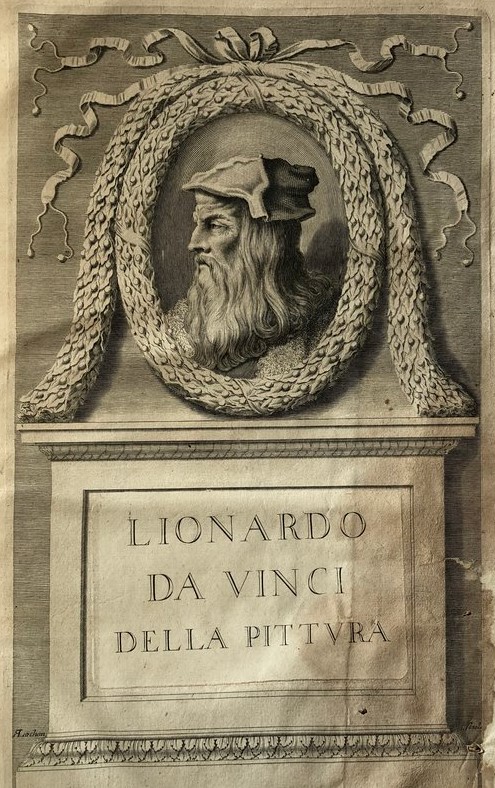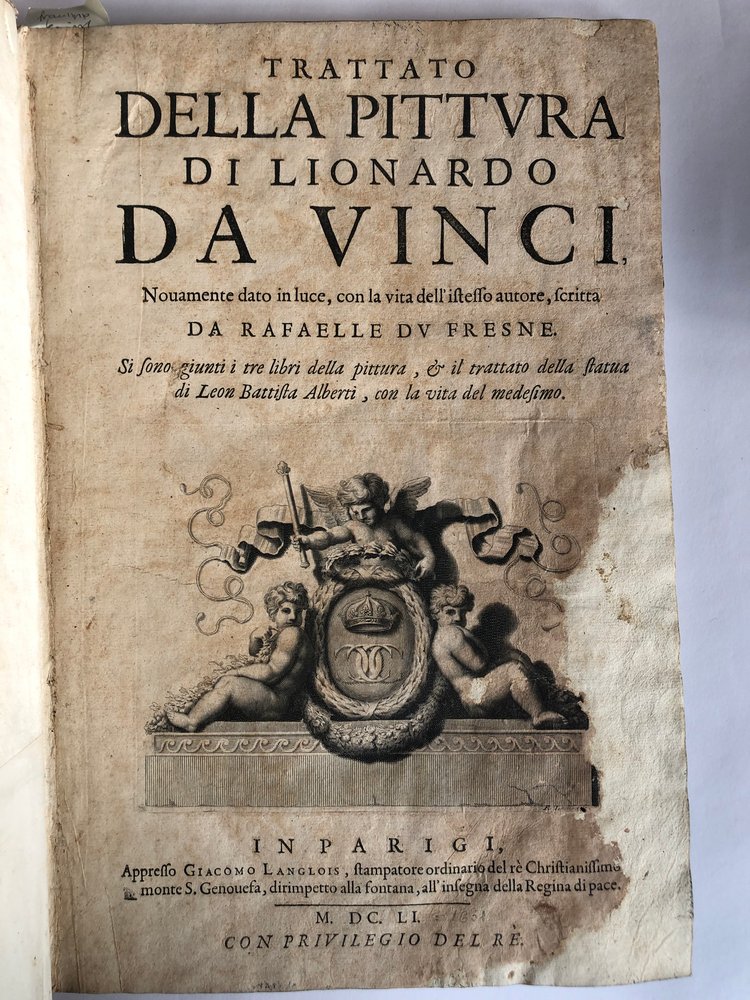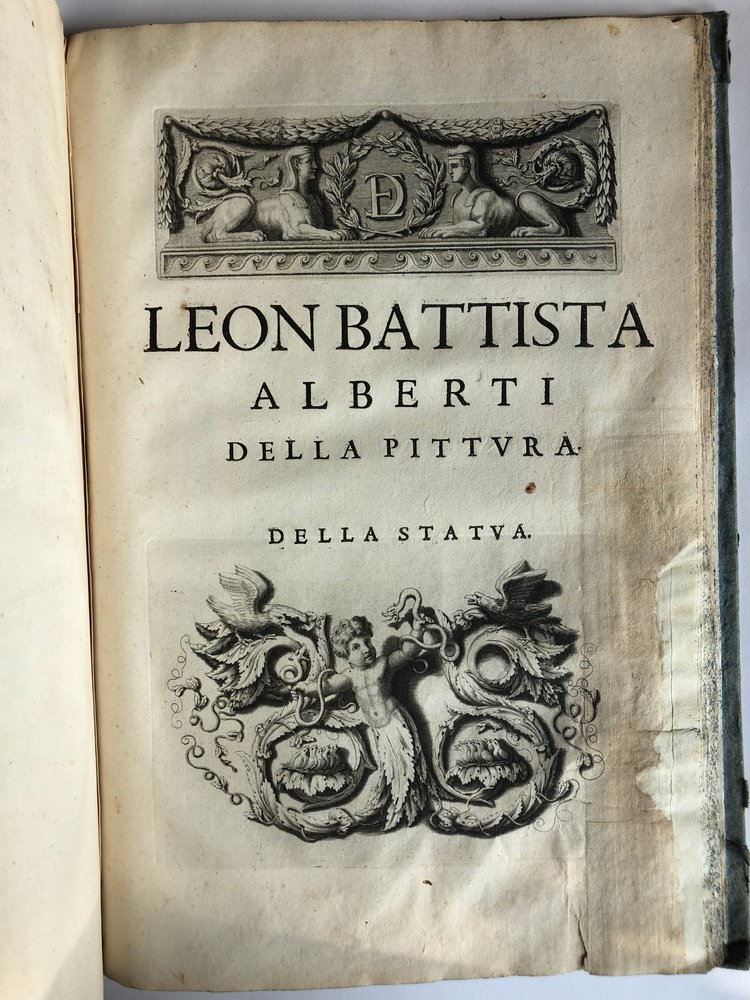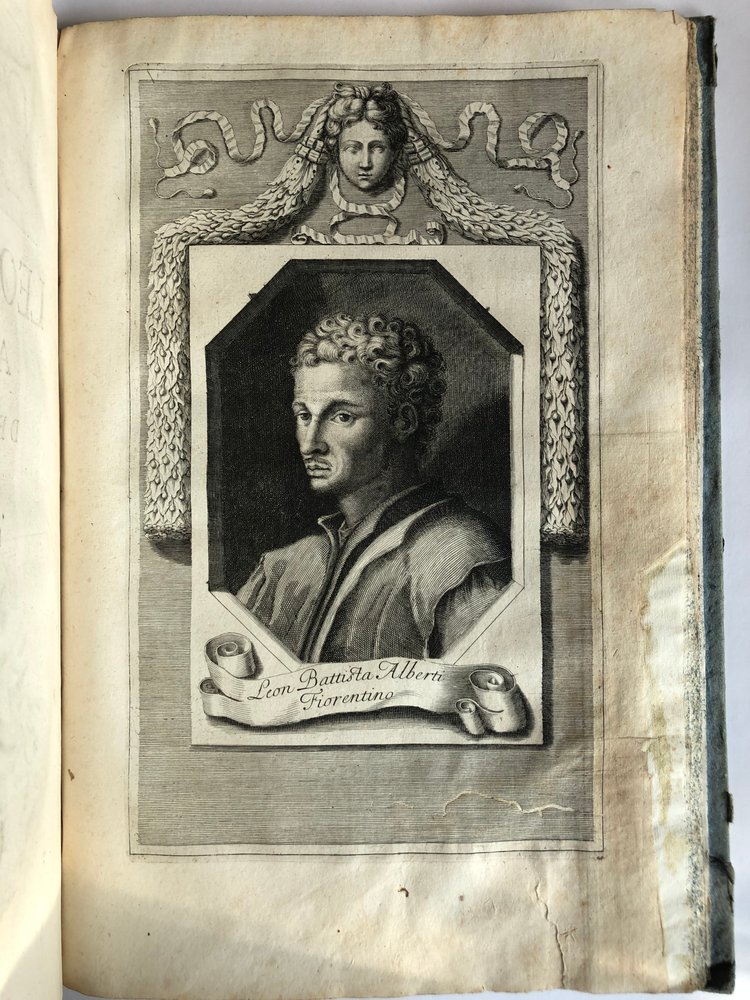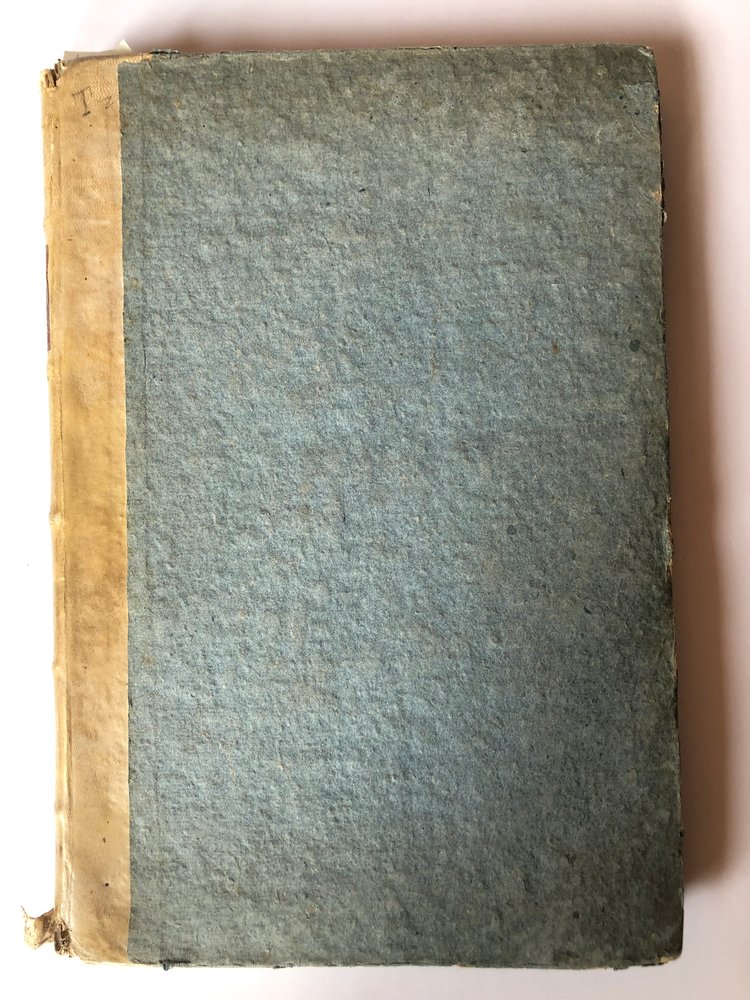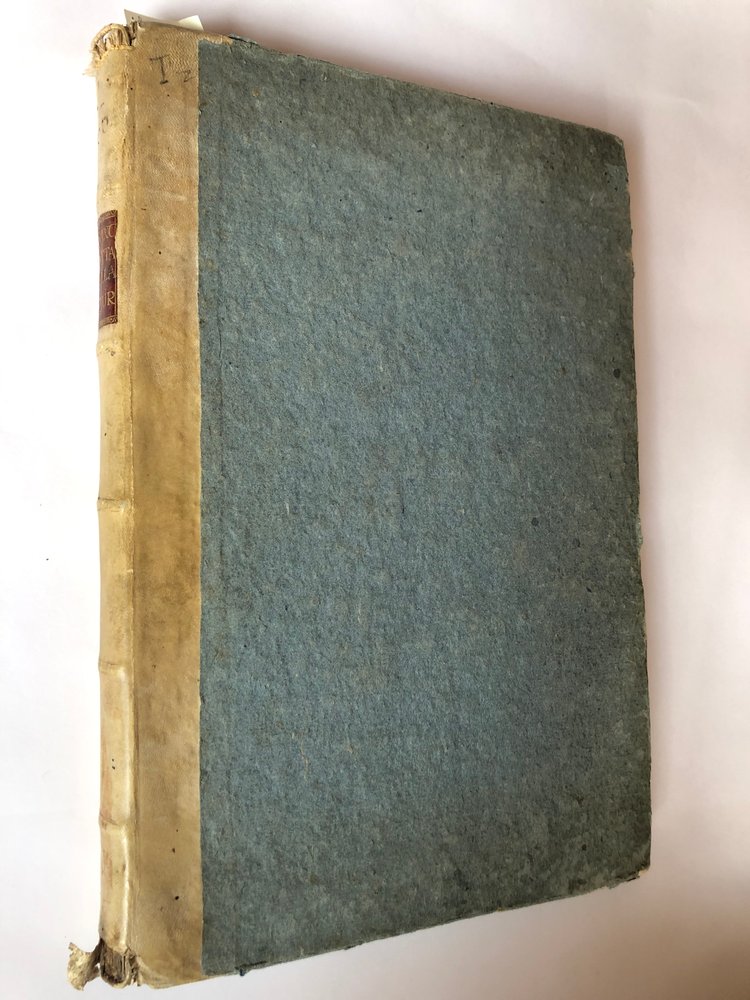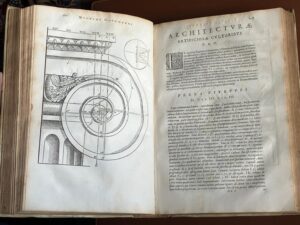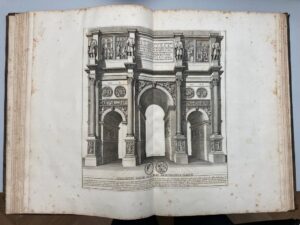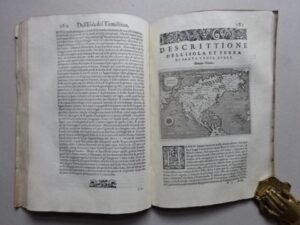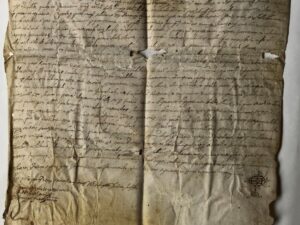First edition of Leonardo’s Trattato della Pittura, published by the French bibliophile and scholar Raphael Trichet Du Fresne (1611-1661) one hundred and thirty-two years after the author’s death. The Trattato della Pittura is a posthumous compilation realized around 1540 by Leonardo’s pupil Francesco Melzi, on the basis of excerpts derived from the papers he inherited from his master. Its importance lies in the fact that, besides being one of the most influential art treatises of the Renaissance and one of the first attempts to define and understand the scientific laws of painting, through the Modern Age and well into the XIX century it remained the main source of information on the artist’s thought.
Leonardo’s work is here edited together with Leon Battista Alberti’s Trattato della statua, and Alberti’s three-volume treatise on Painting , here published in the Italian translation given by Cosimo Bartoli a century before. Moreover, Du Fresne provided the edition with two biographies of both artists and an index of other works on painting and drawing, which remarkably stands out as the first published annotated art bibliography. Since the second half of the XVI century, Melzi’s compilation had enjoyed a wide manuscript circulation in abridged form among cultural circles in Florence and Milan. This 1651 edition cannot be separated from the Leonardo research that developed in the Rome of Pope Urban VIII, Maffeo Barberini (1623-1644). One should think at the decisive impulse given to Vincian studies by the Pope friend and Secretary, Cassiano dal Pozzo, who was persuaded of the importance of the knowledge of Leonardo’s artistic theorizations for a spreading of proper artistic standards in Baroque Rome. Du Fresne dedicated the work to Queen Christine of Sweden, because of the special connection established between Cassiano dal Pozzo’s Roman research center and the court in Stockholm. According to Leonardo’s own introductory words, the Trattato was intended for an audience of young painters and aimed both at giving practical advice and at defining the theoretical and scientific principles that should inspire and guide the practice. Within its 365 chapters, the work deals with a wide range of questions, such as the use of colors, the representation of human expressions and body movements, perspective, proportions, and norms regulating iconographic typologies. The text of this lavish folio edition is illustrated with an important iconographic set by Charles Errard (1606-1689), official painter of Louis XIV and one of the founders of the French Royal Academy of Painting and Sculpture. In turn, Errard’s engravings owe a substantial debt to the drawings decorating Cardinal Francesco Barberini’s manuscript copy of the treatise, which were realized by Nicolas Poussin, the leading painter of the classical French Baroque style. Errard added backgrounds and landscapes to Poussin’s illustrations, that, according to the taste of the age, had transformed Leonardo’s simple sketches into Graeco-Roman human figures posing in classical attitudes.
Bibliography: Cicognara 232 (“prima e magnifica edizione”); Gamba 1164

